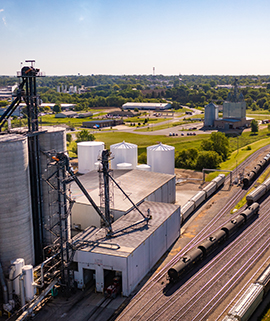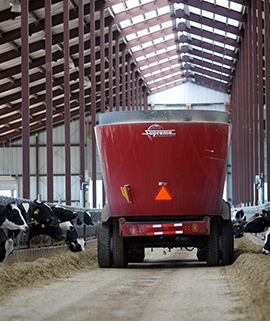Lower Prices to Boost Corn & Soybean Usage
In mid-February the USDA hosted its annual Agricultural Outlook Forum and shared their initial insights on the acreage projected for corn, soybeans and other commodities grown in the United States. US producers are expected to plant nearly 4% less corn in 2024, with a projection of 91 million acres compared to last year’s 94.6 million acres. The stocks-to-use ratio is set to increase to 17.2%, primarily due to last year’s record corn yield and significant acreage. The season’s average price for 2024 is now estimated at $4.40 per bushel.
In comparison, soybeans supplies have been relatively tighter in recent years, leading to a more favorable relative price compared to corn, based on historical ratios. The latest USDA outlook forecasts producers planting approximately 4.5% more acres of soybeans in 2024, reaching a projected 87.5 million acres compared to 83.6 million acres last year. Assuming a 52-bushel trendline yield, stocks-to-use would be around 9.9%, with a projected season average price of $11.20 per bushel.
The Outlook Forum data is unsurprising, as the market has adjusting to larger ending stocks-to-use ratios for both crops since confirming that the 2023 yields were not significantly impacted by the drought as feared. Many producers are still awaiting a “sellable rally” in corn prices, as weather conditions and declining prices have resulted in fewer corn sales than desired. The USDA projects substantial demand for corn and soybeans in 2024, with feed and crush leading the way and ethanol providing a reliable base for corn usage. Export efforts will need to be sustained to meet the USDA’s projections, potentially helping trim excess bushels from the countryside.
While it may seem that lower grain prices will worsen the situation for the crop producers, it’s important to look beyond the immediate challenges and consider who stands to benefit from these lower prices and larger supplies. Lower prices will support industries that process corn and soybeans and enable users of these products to improve their balance sheets. This includes ethanol producers, livestock operations, crush plants, struggling economies in other countries, and the developing alternative fuels sector.
Lower corn and soybean prices will ease the burden on pork producers, providing relief in an industry dealing with low prices. Ethanol facilities turned profitable in 2023 after years of absorbing higher corn and natural gas prices, contributing to the industry’s stability. Producers hope lower corn prices will facilitate the year-round availability of E-15 blended gasoline in Midwest states, offering a cost-effective, locally available product. Midwest corn producers believe using a home-grown product can displace oil from regions misaligned with the nation’s best interests.
Poultry growers facing challenges from avian flu can benefit from lower corn and soybean prices, while the cattle industry may see an uptick in beef supplies with the potential for lower corn prices.
These prices also support the development of renewable diesel and sustainable aviation fuel industries, offering a newer source of demand for corn and soybeans. These industries are driven by the end-users seeking greener and reliable fuel sources.
As we navigate the complexities of the agricultural economy in 2024, it is essential to recognize that while lower grain prices present challenges, they also open avenues for growth and stability in diverse sectors dependent on corn and soybeans.
|


